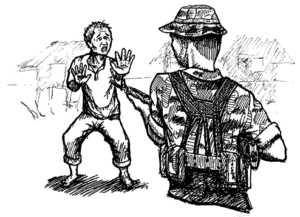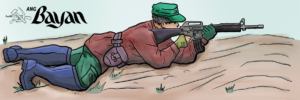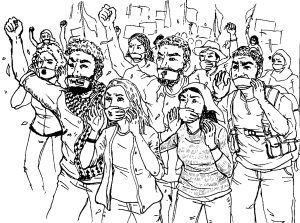Rehabilitation, not reclamation: People's resistance
Ferdinand Marcos Jr declared during his State of the Nation Address last July 25 that he has no intention of suspending infrastructure projects begun under Rodrigo Duterte. These include at least 30 reclamation projects at various levels of implementation, design and preparation.
None of these projects has not received criticism by scientists and environmental organizations. Workers, fishermen, small businessmen and farmers who face dislocation and loss of livelihood have resisted the planned island reclamation in Manila Bay and smart cities in Cebu and various provinces.
Destructive to nature
There have been many scientific studies related to the damage caused by reclamation projects both on coastal areas and nearby uplands. These destroy habitats of thousands of types of marine life, as well as many species of birds. These destroy mangroves that serve as natural barriers against flooding, rise in ocean water, strong storms, tsunami and storm surges similar to what occured in Tacloban City at the height of supertyphoon Yolanda.
In addition, artificial islands will exacerbate natural risks to bays, such as rapid drops in sea level and liquefaction. Siltation from dredging activities destroys nearby coral reefs. Areas from which land and other materials are sourced to create artificial islands are also adversely affected.
According to scientists from the group Agham, some arguments used to justify these projects are incorrect. An example of this is the argument that Manila Bay around Metro Manila is “dead” because fish, coral reefs, seagrass and mangroves in this area no longer exist. Although the area is no longer considered fishing grounds, it forms part of the waters covering the provinces of Bulacan, Cavite and Bataan. Any activity on any part of its waters affects the entire bay. Overall, it is still considered one of the most productive fisheries area in the country.
Potential damage is more stark in the case of the more diverse coastal areas of Cebu, Dumaguete and other bay areas with more developed marine life and integrated ecosystems.
Anti-people
Thousands are set to lose their homes and livelihood due to reclamation projects. Most of the them are low-income workers and small fisherfolk. According to scientists, up to 1.24 million people will be significantly affected by reclamation projects covering nearly 40,000 hectares nationwide. Overall, food supply will be reduced to the destruction of fish and other marine resources. In Metro Manila, at least 100,000 residents in Baseco, Parola, Tondo Foreshoreland and Malate are set to be displaced from four reclamation projects alone.
In Bulacan, San Miguel Corporation has driven away 700 fisherfolk families through bribery, deception and outright violence. Fish harvest has decreased in nearby villages after the company illegally cut mangrove trees.
In Cebu, 500 fishermen in Liloan and Consolacion will lose their livelihood as a 235.8-hectare reclamation project will destroy fishing grounds and mangrove trees. In addition, 2,000 workers in nearby ship docks will lose their jobs. The same dislocation will happen to fisherfolks in three barangays in Minglanilla.
In Dumaguete, 1,000 fisherfolks will lose their livelihood, while the jobs of 38,000 other residents from eight barangays will be put in jeopardy.
In all of these cases, only large businesses and foreign companies will benefit from the buildings, homes, shops, casinos and other tourist hobbies that will be built on these islands. (Read the first part in the previous issue: Destructive Reclamation Projects: Duterte’s Heritage to Marcos.)




